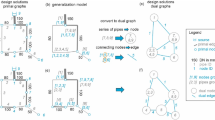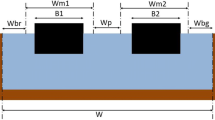Abstract
The objective of this study was to develop a mathematical programming model, namely a network flow model, to provide insight into the potential capacity of the Northern Italy waterway system. We estimate the potential flow that can be transferred between the Adriatic sea and inland harbors through the waterway system made of the river Po and its surrounding canals. For this purpose a network flow model was developed, where the capacity of each arc depends on specific characteristics such as the presence of locks or one-way transit bottlenecks. The capacity of the harbors was modeled according to the number of quays and cranes available for freight transfer operations. The mathematical formulation of the problem leads to a variation of the classical maximum flow problem on capacitated networks that is easily solvable to proven optimality in a negligible computing time by any linear programming solver. Several scenarios were studied, with and without navigation in the Adriatic sea, with limited or unlimited navigation along given parts of the river. Future possible scenarios were also considered to evaluate the impact of infrastructure interventions to empower some inland harbors and to make some parts of river Po adapt to higher class barges. This mathematical programming approach based on a network flow model allows for quickly solving realistic problem instances; furthermore it provides quantitative information about bottlenecks, corresponding to binding constraints, owing to post-optimal sensitivity analysis. This provides useful indications for a rational allocation of scarce financial resources to make the waterway system a viable and convenient alternative to other transportation means.














Similar content being viewed by others
References
Agnetis A, Grande E, Mirchandani PB, Pacifici A (2009) Covering a line segment with variable radius discs. Comput Oper Res 36:1423–1436
Carroll JL, Bronzini MS (1973) Waterway transportation simulation models: development and application. Water Resour Res 9(1):51–63
GNU Linear Programming Kit (2014) http://www.gnu.org/software/glpk/. Accessed 9 Jan 2014
Guenther E, Luebbecke ME, Moehring RH (2010) Ship traffic optimization for the Kiel canal. In: Proceedings of the seventh triennial symposium on transportation analysis
Mitchell K, Wang B, Khodakarami M (2013) Selection of dredging projects for maximizing waterway system performance. Transp Res Rec 2330(1):39–46
Ting C-J, Schonfeld P (1998) Optimization through simulation of waterway transportation investments. Transp Res Rec 1620(1):11–16
Wang S, Schonfeld P (2005) Scheduling interdependent waterway projects through simulation and genetic optimization. J Waterw Port Coast Ocean Eng 131(3):89–97
Masterplan project (2014) http://www.alot.it/en/masterplan. Accessed 3 Aug 2014
Acknowledgments
This study was developed for ALOT—Agenzia della Lombardia Orientale per i Trasporti e la logistica through the consortium Crema Ricerche. The author acknowledges the kind collaboration of Guido Piccoli (ALOT), Roberto Zaglio (ALOT) and Alessandra Ginelli (Crema Ricerche). The observations and comments of three anonymous referees on the original manuscript allowed for significant improvements.
Author information
Authors and Affiliations
Corresponding author
Rights and permissions
About this article
Cite this article
Righini, G. A network flow model of the Northern Italy waterway system. EURO J Transp Logist 5, 99–122 (2016). https://doi.org/10.1007/s13676-014-0068-y
Received:
Accepted:
Published:
Issue Date:
DOI: https://doi.org/10.1007/s13676-014-0068-y




